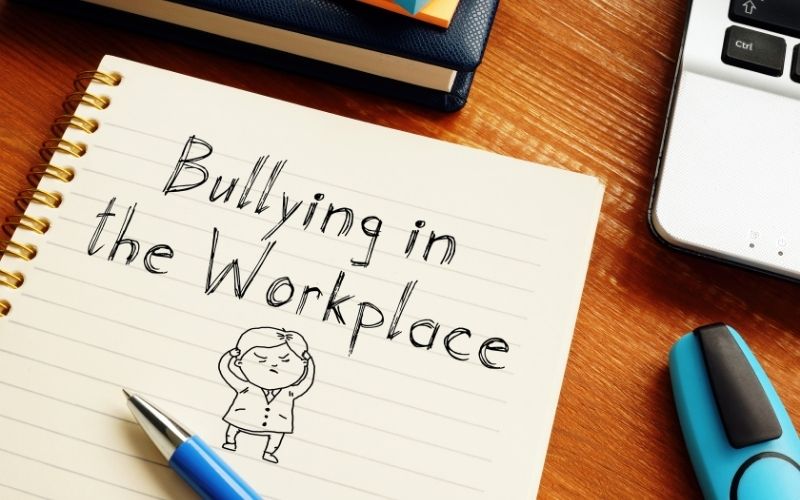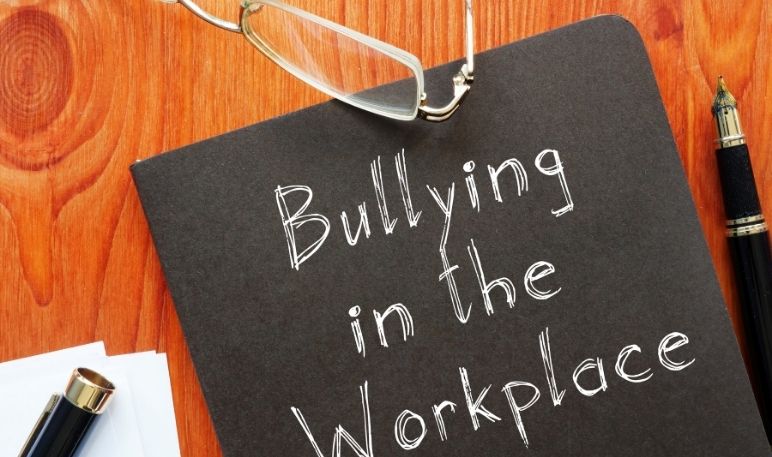Bullying in the Workplace – An In Depth Overview
Not so long ago bullying in the workplace was seen as a sport in some Australian work places. Employees were subjected to “pranks” disguised as initiation rites. These varied from physical abuse to mental abuse to ridiculing employees.
These pranks should no longer be tolerated! However, there is still a belief, in some areas, they are “only harmless fun”. The psychological harm will affect employees and your firm will suffer reputational damage when matters are reported in the media and you face a court.
The employer has an obligation to prevent bullying in the workplace. You must take reasonable care to ensure behaviour in the workplace does not adversely affect the health and safety of other persons.
The Australian Human Rights Commission claimed (2015) workplace bullying cost the Australian economy up to $36 billion each year. The average cost of each case amounting to $17,000-$24,000 for employers.
There are also substantial legal penalties under Occupational Health and Safety legislation across various jurisdictions.
Bullying has an indirect of profitability – it affects:
- Higher absenteeism and turnover of staff
- Lower morale
- Decreased productivity
- Legal and workers’ compensation claims
- Costs of internal or external investigations
- Loss of productivity my managers who have to address issues flowing from the behaviour.
What is Workplace Bullying?

Workplace bullying is repeated and unreasonable behaviour towards a worker or group of workers. The conduct creates a risk to health and safety.
The behaviour must be repeated. This infers a “one-off” incident should be disregarded as it is not, according to the definition, “bullying”.
The conduct may be against a worker or a group of workers, The conduct must create a risk to health and safety.
While a single incident of unreasonable behaviour is not considered workplace bullying, it is important to take appropriate action if there are any instances of inappropriate or disrespectful behaviour. This action is required to prevent any escalation. A record must be kept of any intervention in such circumstances.
Role of the employer
The employer MUST provide a workplace that is safe and without risks to health. This requires the employer to provide and maintain appropriate work systems. This is reinforced by legislation across Australia.
The employer should know the potential for workplace bullying and implement the appropriate policies and training procedures to control the risk.
You should involve employees when developing policies. Legislation may require involvement of employees in workplace health and safety committees.
It is recognised prevention is the best way to prevent bullying in the workplace.
Preventive Measures
Developing a strong workplace culture
This is a significant factor in preventing bullying. A strong positive culture sets the standards and conduct in the workplace. While everyone in the workplace contributes to culture, management has a greater influence and responsibility to establish a positive culture in the workplace.
Setting standards and establishing agreed values.
Employers are obligated under Occupational Health and Safety (OHS) legislation to provide a safe workplace. They must, as far as reasonably practicable, ensure there are no risks to physical health and safety or psychological trauma.
Employers should clearly outline expected values and standards of behaviour to provide a safe environment. This can be in an agreed standard (code of conduct) or specific policies targeting bullying. Employees should, where appropriate, assist to develop these policies.
The acceptance of such policies will assist in reducing incidents of bullying.
Effective leadership
There must be a commitment at all managerial and supervisory levels to prevent and respond to workplace bullying.
Effective leadership will, by example and action, reduce the potential for workplace bullying. Leaders must train employees and lead by example.
Strong leadership is required when any incidents occur.
Workplace policies and procedures addressing bullying

Employers should consult with employees to develop and implement a workplace policy and procedure to address workplace bullying. This will ensure a consistent approach within the company to prevent and respond to any incidents of workplace bullying.
This policy would set the standards of expected behaviour in the workplace. It would also reinforce that bullying behaviour would not be tolerated.
Workplace bullying policy
The policy should take a guiding approach by outlining how everyone should behave and be treated at work. It should also incorporate a preventive approach clearly outlining what behaviour would not be tolerated.
The policy could be a standalone document or incorporated into the code of conduct.
The policy should be developed in conjunction with the employees using an Occupational Health & Safety committee approach where appropriate.
What should be in the policy
The policy should include:
- A statement from management outlining a commitment to providing employees with a healthy and safe working environment.
- Identification of the expected standard of behaviour from all employees.
- Examples regarded as workplace bullying, and examples of appropriate managerial oversight.
- If appropriate, address the various methods of communication that may be used including personal text messages, emails, and social media.
- A section on how an employee can report incidents of workplace bullying with a reference to support programs to help the reporting parties.
- A commitment from management to treat reports of workplace bullying seriously.
- Information on how management would respond reports indicating impartiality and confidentiality where appropriate.
- How reports would be investigated.
- Highlight what action may be taken if the reports are substantiated.
- Where employees can get more information about workplace bullying.
Promoting the Policy
The policy should be promoted and communicated all employees. This should include posters on notice boards, a regular topic on team meetings, advice on intranet pages, and regular discussion with employees.
All employees should receive a copy of the policy on induction. It should also be incorporated as a topic or specific training program at least every 12 months.
The policy should be regularly reviewed.
Encourage reporting
Employees will report instances of bullying if they are confident the organisation will address these reports in line with the bullying policy.
The policy and any promotional material clearly outlines the reporting structure. Employees should be assured the reports will be considered and treated as confidential where appropriate.
Employees should be encouraged to report any incidents as this would allow the employee to take urgent action to address any issues so they do not escalate. The employer can also determine whether their prevention methods are effective.
Reporting will also allow employers to provide prompt assistance and support to employees to mitigate any ongoing stress-related issues.
Transparency
The employer should be transparent when addressing instances of workplace bullying. This may include advice to employees as to what action they took in relation to allegations workplace bullying. It is important to acknowledge the need for confidentiality when promoting this action.
General information can be provided as part of any regular communication process across the organisation. This information may include:
- The number of reports received
- The number of reports resolved
- Time taken to complete investigations
- Whether the investigation was conducted internally or externally
- The general nature of the outcome of the investigations (be conscious of the need to maintain confidentiality where appropriate).
Training within the workplace

Occupational Health & Safety legislation highlights the responsibilities of an employer to provide information, instruction, training, and supervision to all employees to ensure they work in a way that is safe without risks to health.
This includes information relating to workplace bullying. It is important supervisors are fully aware of what comprises as workplace bullying and their obligations to address any identified issues within the workplace. You may be required as the employer to provide specific training in this area to all supervisors and managers.
Induction
Induction must include information about workplace bullying, including relevant policies and procedures.
Induction training should be provided to permanent employees, casuals, contractors, and volunteers. Labour hire personnel and visitors should know polices relating to bullying in the work place.
Training
It is important training is provided to all employees. This training should be comprehensive with an emphasis on what comprises workplace bullying and what action should be taken if the employee witnesses the conduct or is a victim of workplace bullying.
The training should also emphasise the expected standards of behaviour in the workplace.
Supervisors/Managers should receive targeted training highlighting their responsibility to ensure a safe workplace. This training should include:
- Role of communication – how to communicate with various parties
- Managing the “difficult conversation” about workplace bullying
- Providing formal and informal constructive feedback to all parties
- Monitor and address potential issues leading to workplace bullying
- Conflict resolution to address potential issues
- What action to take if a report is made
Impact of Workplace Bullying
Workplace bullying can affect people in many ways. It can lead to:
- Distress, anxiety, panic attacks or sleep disturbance
- Physical illness, such as muscular tension, headaches, and digestive problems
- Reduced work performance
- Loss of self-esteem and feelings of isolation
- Deteriorating relationships with colleagues, family, and friends
- Depression
- Increased risk of suicide
Examples of workplace bullying

Workplace bullying can include:
- Abusive, insulting, or offensive language or comments (including belittling, demeaning, or patronising someone, especially in front of others)
- Yelling or screaming at an employee
- Unjustified or unreasonable criticism or complaints
- Singling someone out and treating them differently from others
- Withholding information, supervision, consultation, training, or resources deliberately to prevent someone doing their job
- Setting unreasonable timelines or constantly changing deadlines
- Spreading misinformation or malicious rumours
- Changing work arrangements, such as rosters and leave, to deliberately inconvenience someone
- Setting tasks unreasonably below or above someone’s skill level
- Humiliating, shouting at or threatening someone
- Excluding someone from participating in activities relating to their work
- Refusal to acknowledge contributions and achievements (such as discovering that a person’s work – and the credit for it – has been stolen or plagiarised)
- Initiation or hazing – where someone is made to do humiliating or inappropriate things
- Teasing or playing practical jokes
- Refusing annual leave, sick leave, and especially compassionate leave without reasonable grounds
- Playing mind games, ganging up or other psychological harassment
- Intimidation (making someone feel less important and undervalued)
- Undermining work performance by deliberately withholding information vital for effective work performance
- Constant unconstructive criticism and/or nit-picking
- Suppression of ideas
- Overloading a person with work or allowing insufficient time for completion and criticising the employees work in relation to this
- Utilisation of various social media platforms and emails
It is important to realise any physical contact such as pushing, shoving, tripping, or grabbing is an assault. These actions should be taken seriously and, where appropriate, reported to the police so there is a record of the conduct.
The same applies to any threatening behaviour or physical contact with a weapon of any description including tools or other weapons (knives, guns, clubs). This must be reported to the police.
What is not considered workplace bullying
While some work practices may appear unfair they are not regarded as bullying if the conduct falls within accepted work practices and are done reasonably.
The following are examples of what is not considered as bullying if conducted reasonably.
- Setting realistic and achievable performance goals, standards, and deadlines
- Fair and appropriate rostering and allocating working hours
- Transferring someone to another area of the organisation/business or role for operational reasons
- Deciding not to select a worker for promotion where a reasonable process is followed
- Informing a person about their unsatisfactory work performance in an honest, fair, and constructive way
- Informing someone of their unreasonable behaviour in an objective and confidential way
- Implementing organisational changes or restructuring
- Taking disciplinary action, including suspension, or terminating employment where appropriate or justified in the circumstances.
What can increase the risk of bullying in the workplace?
These factors can increase the potential for bullying in the workplace.
Work stressors
High job demands, limited job control, organisational change, role conflict, job insecurity, tolerating unreasonable behaviour or a lack of behavioural standards, unreasonable expectations of clients or customers.
These can lead to frustrations within the general workforce and management.
Leadership styles
An authoritarian leadership style does not allow for employee interaction. It is a “damn it – do it” approach with no guidance or advice.
The is a lack of formal delegation leading to more assertive employees taking an inappropriate oversight role.
Work systems
Inappropriate workplace practices, lack of resources or training can create stress in the workplace. Unreasonable key performance standards, unrealistic expectations or time frames will also lead to stress in the workplace.
The stress leads to issues on the floor resulting in bullying as a potential outlet to reduce it.
Work relationships
Relationship between employees is also a key factor. Poor communication between management and employees, and employees themselves is also another factor. Low levels of managerial support opens the door for bullying. Ongoing conflict will also lead to bullying.
Workforce personnel
Research highlights some employees are more at risk from workplace bullying. These include, but not necessarily limited, to apprentices, casual employees, younger employees, injured employees, or those returning to work after an injury.
Employees who lodged a complaint are also likely to be targeted on return to work.
Bullying is also associated with ethnicity, religion, gender, disability, or sexual preferences.
What should I do if I am bullied at work?
You need a record of what occurred. This is important if the matter is going to be followed up.
The record should include such details as:
- Date and time of incident
- What happened before the incident?
- Details of the incident
- What happened
- Who was involved
- What was said
- Who said anything
- Any witnesses
- What occurred after the incident?
- Where did the incident occur?
- Was there any CCTV coverage?
- Was there any damage to clothing?
- If so, keep the clothing after the incident if possible. If not, photograph damage.
- Were you injured in anyway (cuts, bruises)
- Photographs where possible
- If you had medical treatment then keep details of where and when treatment occurred. Who provided the treatment.
- Note your feelings flowing from the incident
- Were you upset?
- If so – why?
- Were you embarrassed?
- If so – why?
- Were you upset?
- Why do you believe the conduct was bullying.
- You need to tell someone what happened. There may be a contact listed under occupational health and safety procedures.
- If you are a member of the Union then consider speaking with your delegate.
Remember, bullying is repeated behaviour. Your records will support the repetition of the conduct.
The employer must provide you with a safe work environment free of bullying and harassment. If the firm takes no action then it would be appropriate to refer your complaint to the Union if you are a member.
Remember, if you believe you are in immediate danger then, if possible, leave the workplace. You should (if appropriate) ring 000 for police assistance.
If you believe the incident was serious and you feared for your safety then report the incident to the police. Conduct leading to you fearing for your safety may be assault. Police will take the appropriate action.
Summary
The onus is on management to ensure there is an effective policy and procedure to address workplace bullying. However, eliminating workplace bullying requires action from everyone in the workplace.
Employees must be courageous in addressing this issue. Bullies will sidestep preventive measures. They will also use more subtle ways to target people. Gradual ostracization or exclusion can erode the confidence of a person. The “pain” of this is not visible like a bruise or cut but it can eat away at the victim.
Bullies use social media and other subtle methods to target victims. A bully is normally an informal leader, others see his actions as non-harmful, just a “joke”. Get over it, it is all in fun and other comments lead to a further erosion of self confidence in the victim.
A failure to report incidents leads to an escalation as the bully gains further confidence in not being sanctioned for his/her actions. A failure by other workers to report the incidents means they are complicit in the bullying as if they were taking the action against the employee.
The company must act – a failure to do so will expose the company to litigation leading to penalties under legislation and in the civil jurisdiction.

